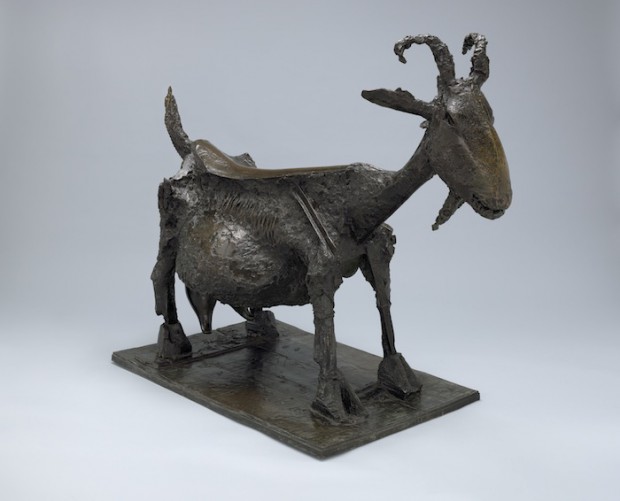If you’re anywhere near New York soon, don’t miss the exhibition of Picasso’s sculptures at the Museum of Modern Art. It has restored my love of the great magician.
As a teenager I had eyes for no one else. He was the obvious god of modern art. Almost all previous art looked boring, and not much subsequent art spoke to me. I suppose I liked the posturing maleness (I also liked The Rolling Stones). But then his paintings gradually lost some of their force (at around the time that Stones songs began to sound dull after the first ten seconds of Dionysian excitement). At Tate Modern’s Matisse Picasso show in 2002 I far preferred the bright canvases of his rival – and still do. And I still feel that many of his paintings are ugly, strident, hectoring – so much about his vision that it’s barely a vision of the world.
Last week I saw the magic afresh. I think he’s better as a sculptor. Here, I think, he is freer, more playful, more joyful. It’s going too far to say that the canvas constrained him, but I want to go almost that far. His paintings gravitate to gravity, as if he feels art-history on his shoulder. His sculptures feel free of this: they’re exuberant, relaxed, childlike, foolish, fuck-it-who-cares. He imitated tribal masks that used found materials, basically launching that whole branch of modern art. And he unashamedly stayed close to the aura of tribal art, with no fear of seeming derivative or faux-primitive. Other artists began to occupy territory between primitivism and abstraction – with results that are beginning to feel a bit earnest. There’s something more honest about Picasso’s decision to stay with a primitive-influenced figurative style.
Of course all these sculptures bear the stamp of his ego, his will-to-power in declaring this bed-spring to be hair, these nails eyes, these forks a bird’s feet, but in three dimensions this somehow feels lighter. The magic feels less look-at-me, more look-at-this. He makes bronze and stone feel lighter than paint on canvas.







Comments